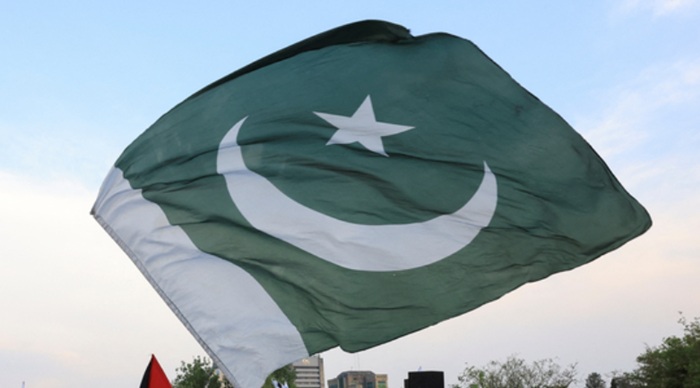
In the wake of devastating floods and persistent economic turbulence, Pakistan has projected a record $43 billion in remittances for the fiscal year 2025. This surge, driven by overseas Pakistanis responding to domestic hardship, is being hailed by policymakers as a lifeline, an antidote to weak exports and a bulwark against current account deficits. Yet beneath this veneer of resilience lies a troubling truth: Pakistan’s dependence on remittances is not a sign of economic strength, but a symptom of systemic stagnation.
At first glance, the numbers appear promising. Remittances rose 7% year-on-year to $3.13 billion in July 2025, with major inflows from Saudi Arabia ($737 million), the UAE ($643 million), the UK ($463 million), the EU ($433 million), and the US ($267 million). Authorities point to historical patterns, such as the post-2010 flood remittance spike, as evidence of a reliable trend. But this optimism obscures a critical flaw: the economic value of these inflows is being artificially inflated through currency manipulation.
Pakistan’s official exchange rate of 284 PKR/USD is significantly below the true market rate, which ranges between 320–350 PKR/USD. This discrepancy creates a distorted picture of remittance impact. For instance, $35 billion at the official rate translates to 9.94 trillion rupees, but at the real market rate, the domestic value would be 12.25 trillion rupees. This 23% understatement of economic need masks the erosion of purchasing power and sets the stage for a future reckoning. When the inevitable currency adjustment occurs, the same dollar inflows will yield far less domestic relief, exposing the fragility of Pakistan’s fiscal foundation.
Despite record remittance inflows, Pakistan’s currency market is gripped by a dollar shortage. Banks are selling dollars at rates significantly higher than the State Bank of Pakistan’s (SBP) official figures, with premiums of Rs.2–2.5 pushing the effective rate to Rs. 287–288 per dollar. The open market rate has climbed to Rs. 288.60, Rs.10 higher than the previous year. Importers struggle to fulfill even modest dollar requirements, such as $15,000 for letters of credit, while the general public faces rising costs.
This paradox, surging remittances amid dollar scarcity, reveals a deeper dysfunction. The fiscal year has closed, and scheduled payments have been made, yet liquidity remains elusive. The disconnect between remittance inflows and actual currency availability suggests that the system is not absorbing foreign exchange efficiently, further undermining economic stability.
Money Transfer Operators (MTOs) and banks are reaping windfall profits from rising transaction fees, which have ballooned from Rs.1 to Rs. 4.5 per transfer. These charges generated nearly Rs. 130 billion in profits, enriching financial intermediaries while burdening overseas Pakistanis. Under the Pakistan Remittance Initiative (PRI), the government once incentivized banks with payments of 20–35 Saudi Riyals per transaction, now reduced to 20 Riyals for transfers above $200.
SBP officials defend the fee structure, citing Pakistan’s average remittance cost of $8.2, lower than India’s $10.2 and Bangladesh’s $13.9. Yet this comparison ignores the broader context: rupee depreciation and systemic inefficiencies have pushed operator costs higher, while the benefits to senders and recipients remain marginal. Senator Saleem Mandviwalla’s call to revert to the Rs.1 fee structure underscores growing concern that remittance facilitation is enriching institutions, not empowering citizens.
A closer look at remittance sources reveals dangerous geographic concentration. Nearly 65% of inflows originate from Gulf Cooperation Council (GCC) countries, with Saudi Arabia and the UAE leading the pack. This dependence exposes Pakistan to external shocks, oil price volatility, labor policy shifts, and regional instability. A policy change in a single Gulf state could wipe out the majority of Pakistan’s remittance income, triggering a balance of payments crisis.
Moreover, the remittance boom reflects desperation, not development. Over the past 17 years, nearly 10 million Pakistanis have emigrated, draining the country of talent and weakening its domestic economic capacity. The recent surge in emigration during the economic crisis suggests that remittance growth is a coping mechanism, not a sign of progress. It is foreign exchange relief purchased at the cost of human capital.
Compounding the fragility is the hawala system, an informal network through which an estimated $4–6 billion flows annually. These unofficial channels respond swiftly to exchange rate distortions and can vanish overnight during currency stress. Ironically, artificial currency support encourages hawala transactions while discouraging formal remittances. When manipulation becomes unsustainable, both official and informal flows face simultaneous pressure, amplifying balance of payments risk.
Remittances are notoriously procyclical, they rise during good times and fall during crises. During Pakistan’s 2022–2023 economic downturn, remittances dropped to $26.3 billion due to Gulf pressures and domestic uncertainty. The current surge to $35 billion represents recovery from crisis lows, not sustainable growth. Worse, it coincides with peak currency manipulation, suggesting that current levels are artificially inflated and vulnerable to collapse.
When adjustment comes, Pakistan will face a devastating double blow: the loss of artificial currency support and the erosion of remittance purchasing power. This could reduce the domestic impact of remittances by 30–40%, transforming today’s apparent strength into tomorrow’s acute vulnerability.
Pakistan’s reliance on remittances is a mirage, an illusion of prosperity built on fragile foundations. It masks economic stagnation, conceals structural weaknesses, and defers necessary reforms. Without diversification, transparency, and investment in domestic capacity, the country risks trading short-term relief for long-term ruin.
__________________________________________
______________
The author can be reached at RajRajdev@gmail.com.
The views expressed here are the author’s own and do not necessarily reflect the organization’s.
